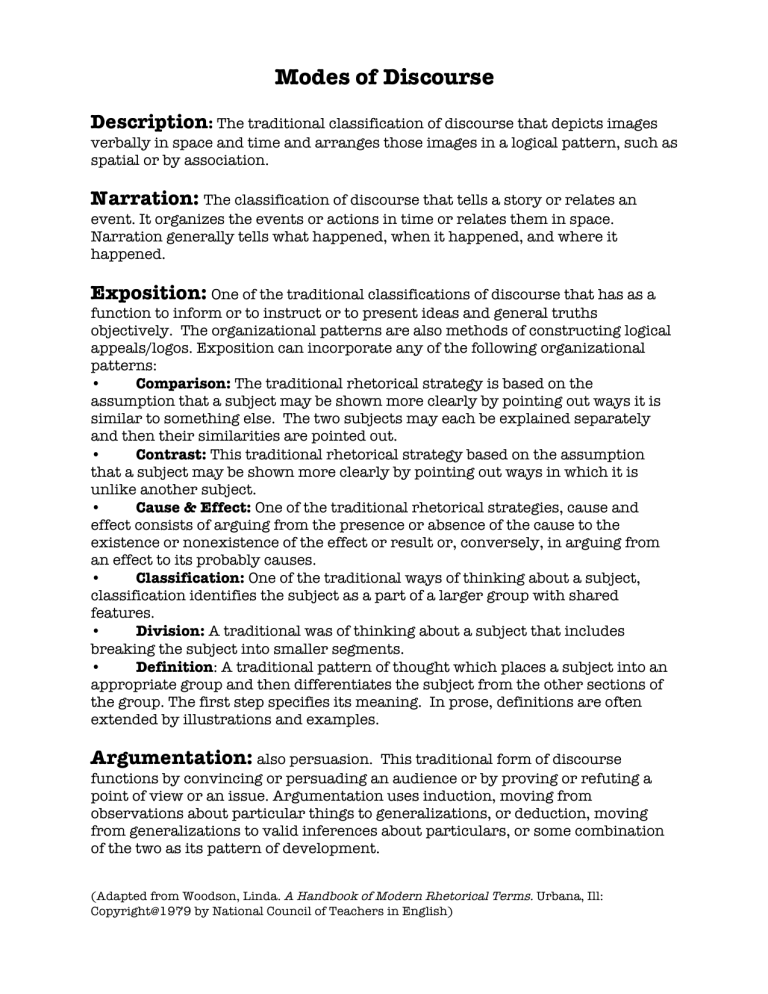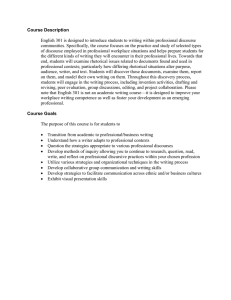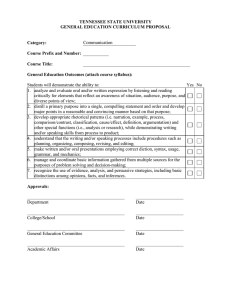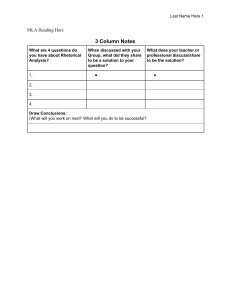
Modes of Discourse Description: The traditional classification of discourse that depicts images verbally in space and time and arranges those images in a logical pattern, such as spatial or by association. Narration: The classification of discourse that tells a story or relates an event. It organizes the events or actions in time or relates them in space. Narration generally tells what happened, when it happened, and where it happened. Exposition: One of the traditional classifications of discourse that has as a function to inform or to instruct or to present ideas and general truths objectively. The organizational patterns are also methods of constructing logical appeals/logos. Exposition can incorporate any of the following organizational patterns: • Comparison: The traditional rhetorical strategy is based on the assumption that a subject may be shown more clearly by pointing out ways it is similar to something else. The two subjects may each be explained separately and then their similarities are pointed out. • Contrast: This traditional rhetorical strategy based on the assumption that a subject may be shown more clearly by pointing out ways in which it is unlike another subject. • Cause & Effect: One of the traditional rhetorical strategies, cause and effect consists of arguing from the presence or absence of the cause to the existence or nonexistence of the effect or result or, conversely, in arguing from an effect to its probably causes. • Classification: One of the traditional ways of thinking about a subject, classification identifies the subject as a part of a larger group with shared features. • Division: A traditional was of thinking about a subject that includes breaking the subject into smaller segments. • Definition: A traditional pattern of thought which places a subject into an appropriate group and then differentiates the subject from the other sections of the group. The first step specifies its meaning. In prose, definitions are often extended by illustrations and examples. Argumentation: also persuasion. This traditional form of discourse functions by convincing or persuading an audience or by proving or refuting a point of view or an issue. Argumentation uses induction, moving from observations about particular things to generalizations, or deduction, moving from generalizations to valid inferences about particulars, or some combination of the two as its pattern of development. (Adapted from Woodson, Linda. A Handbook of Modern Rhetorical Terms. Urbana, Ill: Copyright@1979 by National Council of Teachers in English)




